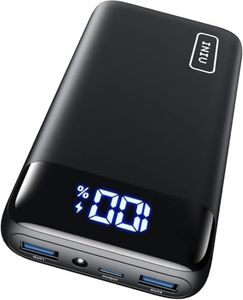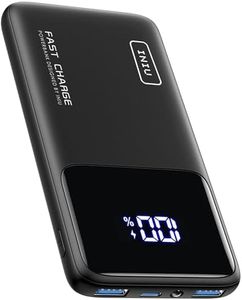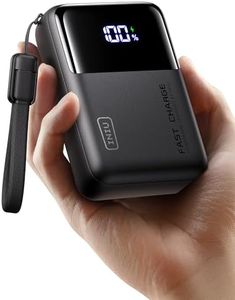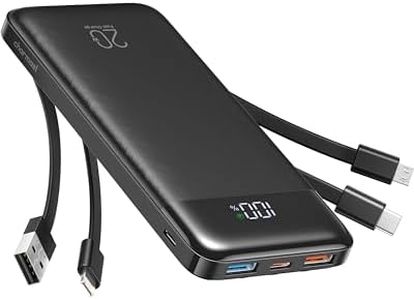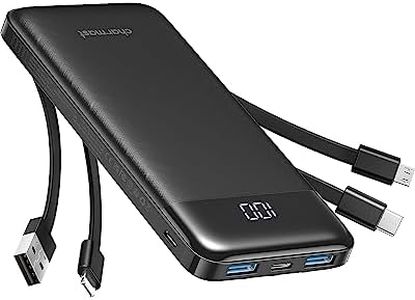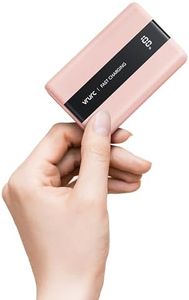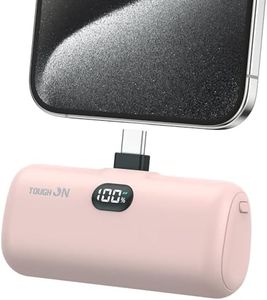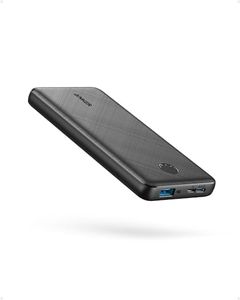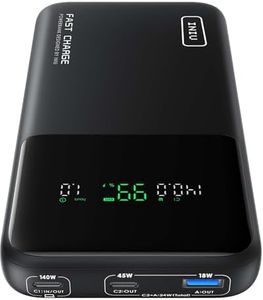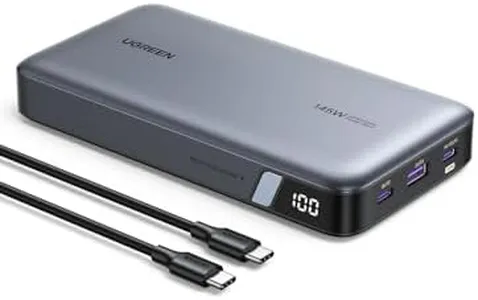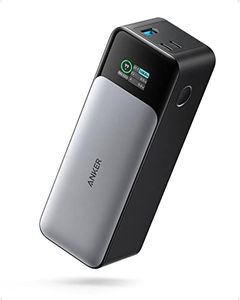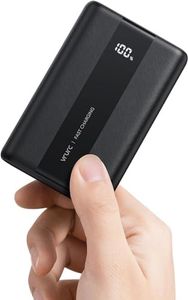We Use CookiesWe use cookies to enhance the security, performance,
functionality and for analytical and promotional activities. By continuing to browse this site you
are agreeing to our privacy policy
10 Best Portable Chargers
From leading brands and best sellers available on the web.Buying Guide for the Best Portable Chargers
Choosing a portable charger, also known as a power bank, doesn't have to be confusing. The main goal is to find a model that charges your devices efficiently while fitting your daily habits and travel patterns. Consider how often you'll use it, what devices you want to charge, and how portable you want it to be. By understanding key features, you can choose a charger that feels like it was made for you.Capacity (mAh)Capacity, measured in milliampere-hours (mAh), tells you how much charge the power bank can store. Higher capacity means more charges for your devices. Small ranges (2,000–5,000mAh) are perfect for quickly topping up a smartphone once, making them ultra-portable and light. Mid ranges (10,000–15,000mAh) can charge most phones two to three times and may support tablets, striking a balance between portability and usefulness. Large capacities (20,000mAh and above) let you charge several devices multiple times or power bigger devices, but they’re bulkier. Think about your everyday needs: for emergencies or short outings, low capacity works well; for travel and multiple devices, go bigger.
Output Ports and TypeOutput ports determine how many and what kind of devices you can charge at once. Most portable chargers offer USB-A, USB-C, or even Lightning ports. More ports let you charge multiple devices—a handy option for people with multiple gadgets. USB-C ports often provide faster charging and can be used with newer devices. If you mainly charge a phone, one or two ports might be plenty, but for tablets, headphones, or sharing with friends, more ports add flexibility.
Charging Speed (Output Power in Watts or Amps)Charging speed is usually shown in watts (W) or amperes (A) and refers to how fast the charger can deliver power to your device. Basic models might give 5W/1A, which is slower, while more advanced ones offer 10–20W or more, supporting features like 'fast charging' for compatible devices. If your devices support quick charging, look for a higher wattage, but for standard phones or occasional use, standard speeds are usually enough.
Size and WeightSize and weight affect how easily you can carry your charger around. Small, lightweight chargers slip easily into a pocket or bag, making them perfect for daily carry. Larger models with more capacity can be heavy and bulky—better for backpacks or travel bags. Pick something you know you’ll actually take with you; if it’s too heavy or large, it might get left at home.
Input Charging SpeedInput charging speed is how fast the power bank itself recharges when plugged in. This matters if you need to refill it quickly, especially for travel. Faster input (like USB-C with high wattage) means less waiting time. For everyday use, slower input might not bother you, but if you’re always on the go and need quick top-ups, look for this feature.
Special Features (e.g., Wireless Charging, Pass-Through Charging, Safety Protections)Some portable chargers have extra features like wireless charging (charging your phone without plugging in a cable), pass-through charging (charging the power bank and your device at the same time), LED indicators for battery level, or safety features like overcharge protection. Decide which of these features match your habits: wireless charging for cable-free convenience, pass-through for travel, and safety features for peace of mind.

